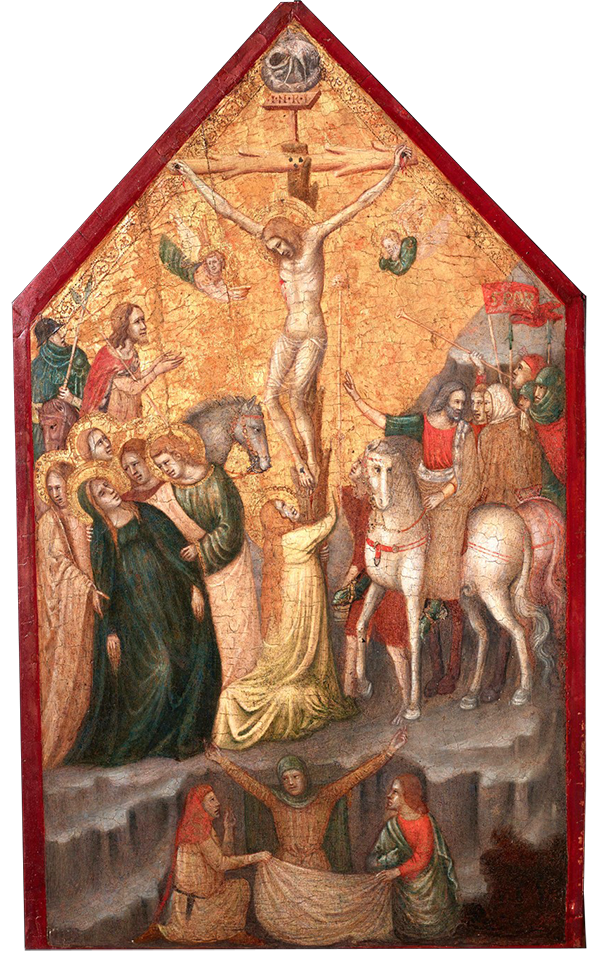The technical examination of Giovanni (da Rimini) Baronzio’s Crucifixion, dated in the second quarter of the 14th century focused on: (1) the identification of the original materials and techniques, (2) the evaluation of the work’s state of preservation, and, (3) the integration of non-destructive analytical techniques to study its complex history of interventions.
APAC Labs performed a rigorous non-invasive analysis of a 14th-century panel painting by Italian artist Giovanni Baronzio using a variety of spectroscopic, imaging, and digital microscopy techniques.

© APAC ‘The Crucifixion’ by Giovanni Baronzio, end of 1320s
The application of X-Ray Radiography (XRR), digital microscopy, Ultraviolet (UV) and Infrared (IR) imaging, Fiber-Optics Reflectance Spectroscopy (FORS), Fourier Transform Infrared Spectroscopy (FTIR) and X-Ray Fluorescence spectroscopy (XRF), Reflectance Transformation Imaging (RTI) provided a comprehensive technical study of the small in size painting (45,4 x 26,9). Results confirmed the consistency of original pigments with those used by Italian Renaissance artists on panel paintings: lead white, earth pigments, cinnabar, minium, carbon and iron black, copper green and blue, gold leaf as well as the use of the sgraffito technique (the artist scratches through a paint layer to reveal another layer of contrasting color or material). The wooden surface was prepared with a thick layer of calcite. Furthermore, results identified three major phases of intervention dated to the second half of the 19th, mid 20th and the end of 20th centuries.

© APAC Technical examination of ‘The Crucifixion’ by Giovanni Baronzio, end of 1320s
Our intake
APAC Labs researchers performed a comprehensive technical examination of a 14th century panel painting by Italian artist Giovanni Baronzio. The panel depicts the Crucifixion of Christ, and was painted in tempera and gold on wood. Results showed that while the original painting materials align with those used by artists in fourteenth-century Renaissance Italy, there are multiple later interventions including extensive overpainting of various parts of the original Crucifixion composition.
I want to learn more :
Read more about the study here
Email: apaclabs@cyi.ac.cy

